continuous learning
Unlocking Deeper Insights: The ‘And Then What?’ Strategy for Multifamily Leaders

Photo by Towfiqu barbhuiya on Unsplash
As a business leader, there is a need for thoughtful decision-making. Leaders must avoid surface-level thinking and foster a culture of deep understanding and critical examination. Easy to say, very hard to develop the discipline. One transformative question that can alter how professionals in this space approach problems is: “And then what?” This method, inspired by Shane Parrish’s work, advocates for pushing beyond initial conclusions and diving deeper into the ramifications of our decisions.
At face value, multifamily leadership might see a solution as the endpoint. You identify a challenge, put a pure definition to the problem, brainstorm, find a solution, and implement it. However, by stopping at the first solution, leaders might miss out on unforeseen consequences or even better alternatives. That’s where the “And then what?” strategy comes into play.
When you pose the question, “And then what?” after arriving at a potential solution, you compel yourself and your team to forecast beyond the immediate; for multifamily leaders, this can mean the difference between a successful strategy and one with unintended negative impacts. For example, if considering a new technology solution to streamline operations, it’s tempting to adopt it based on initial benefits. However, asking “And then what?” might reveal potential integration issues with existing systems or perhaps a need for significant team training, impacting productivity in the short term.
This questioning strategy also promotes human-centric leadership, which I consider key in multifamily. By continually asking, “And then what?” leaders are pushed to consider the human consequences of their decisions. Will the new strategy alienate certain team members? Could it unintentionally create more work or stress for particular roles?
Furthermore, embracing the “And then what?” approach fosters an environment of continuous learning and innovation. It challenges conventional wisdom, compelling teams to explore contrarian ideas or new technologies that might offer more effective or efficient solutions.
The beauty of this approach is its simplicity. It doesn’t require extensive training or the adoption of new technologies. It’s a mindset, a commitment to thorough examination and forward-thinking. It’s an invaluable tool for multifamily leaders to tease out human potential.
Share this:
Embrace Self-Belief: Your Key to Multifamily Success
Navigating Leadership Challenges with Unwavering Confidence

Photo by Sydney Rae on Unsplash
Embarking on the journey of multifamily property management leadership often requires a robust backbone of self-belief. Winston Churchill famously said, “Success is not final, failure is not fatal: it is the courage to continue that counts.” This aphorism resonates deeply within you as a multifamily leader, where adaptability, resilience, and self-belief are crucial to overcoming obstacles and creating value for your team members, residents, and vendor partners.
Without self-belief, leaders may find themselves constantly questioning their decisions, leading to hesitations and delays, which can harm the operations and growth of their property portfolio. Furthermore, a leader doubting their abilities could make team members feel unsure and less confident about the company’s direction. The absence of self-belief, therefore, can ripple outwards, creating a challenging work environment and potentially impacting resident satisfaction. I have always believed prospects and residents will receive the same experience as your team members. If you have poor customer service ratings, it’s likely a symptom of a poor team member experience.
Building self-belief doesn’t occur overnight; it is a gradual process requiring consistent effort. One effective method is breaking down your daily tasks into small, quickly achievable actions and recognizing each accomplishment. This practice instills a sense of achievement, gradually strengthening self-belief and personal resolve.
Another avenue to bolster self-belief is embracing continuous learning. Churchill himself was an advocate for continued education and growth. Leaders can enhance their skills, knowledge, and confidence by investing time and resources into personal and professional development.
Moreover, cultivating resilience and adaptability aids in fostering self-belief. The multifamily property space is dynamic, and leaders must be ready to respond to changes. By viewing setbacks as opportunities for growth rather than failures, leaders build resilience and strengthen their belief in their ability to succeed.
Leaders with solid self-belief navigate their journey successfully and inspire their teams. They set a positive tone and work environment, encouraging employees to be confident in their roles, thereby boosting overall productivity. Furthermore, when leaders are confident in their decisions and direction, it leads to improved tenant relationships, enhancing the reputation and standing of the property in the market.
Share this:
Transcending Experiences: Huxley’s Insight for Multifamily Property Management Leadership
Redefining Leadership Through Huxley’s Lens of Experience

Photo by Jehyun Sung on Unsplash
Summary
Drawing inspiration from Huxley, multifamily property management leadership involves more than undergoing experiences. The real value lies in how leaders respond, adapt, and transform these experiences into valuable lessons. Let’s elucidate how embracing Huxley’s quote can foster strong leadership traits in the multifamily property management industry.
The Problem
Challenges in multifamily property management leadership often arise from overemphasizing gaining experiences rather than transforming them into knowledge. Leaders might face many situations, but leadership development becomes stagnant without consciously interpreting and applying these experiences.
Solutions:
- Leaders who embody Huxley’s perspective can create meaningful change. They convert every experience, positive or negative, into opportunities for growth. The result is a more resilient, adaptive, and empathetic leadership style.
- This transformative approach also encourages a culture of continuous learning. By observing and interpreting experiences, leaders can promote a proactive mindset within their teams, fostering innovation in property management.
- Finally, applying Huxley’s wisdom supports informed decision-making. Leaders become better equipped to navigate the complex landscapes of property management, leading to improved outcomes for the organization and its stakeholders.

